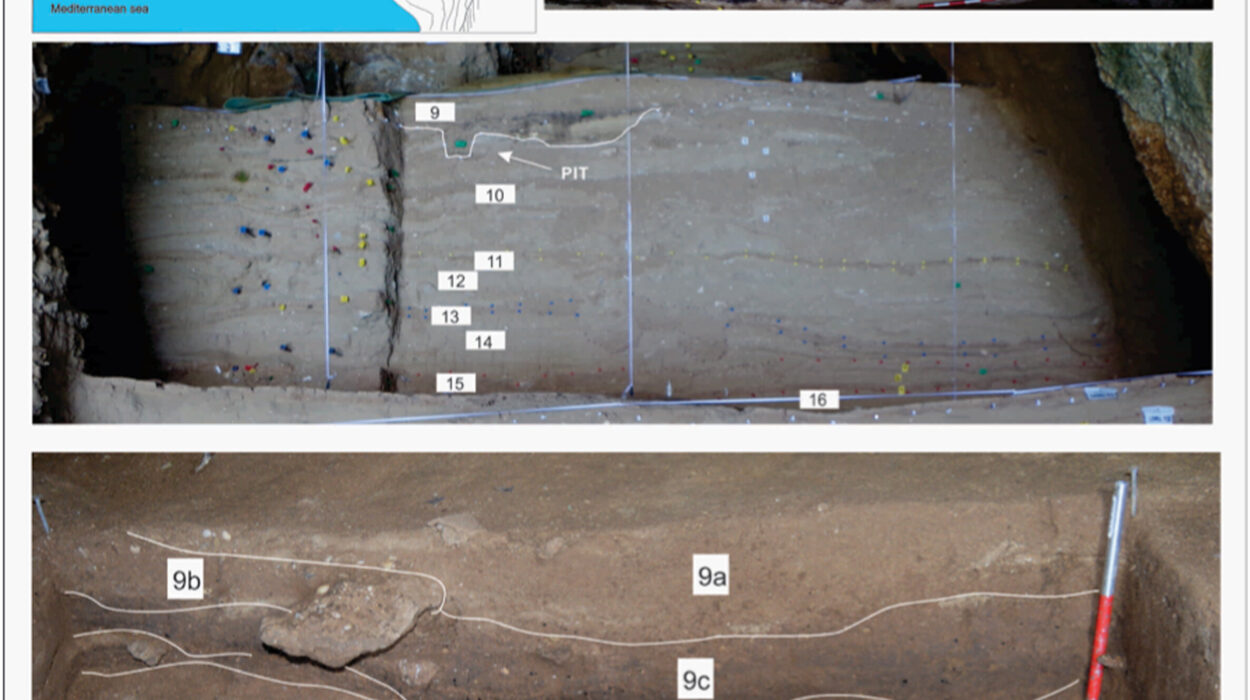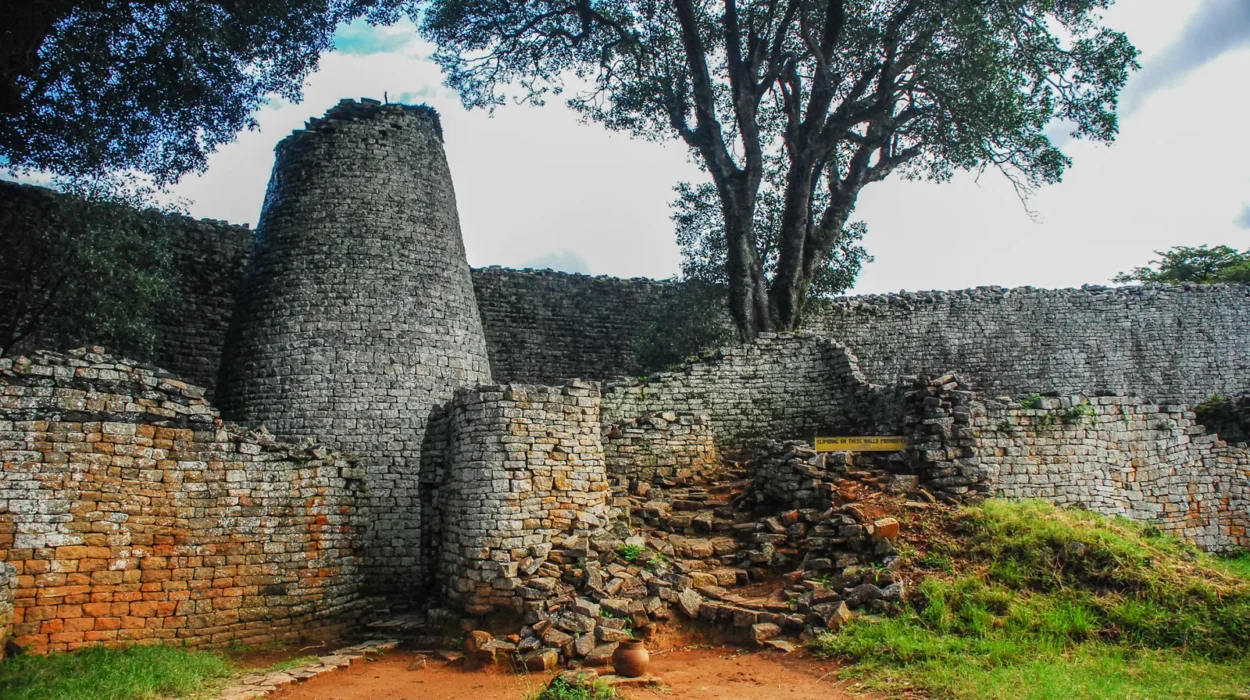For centuries, it lay hidden in plain sight—an enigmatic trace running across the highland deserts of Mongolia, partially swallowed by wind-sculpted dunes and forgotten by time. Known locally and vaguely documented in fragments of Chinese chronicles, the Gobi Wall stretches for over 321 kilometers, snaking across one of the most inhospitable landscapes on Earth. Unlike the Great Wall of China, whose iconic battlements draw millions of tourists annually, the Gobi Wall has remained largely obscure—unmapped, understudied, and misunderstood.
That is, until now.
In a groundbreaking new study published in the journal Land, a team of international researchers has peeled back the layers of dust and legend surrounding this vast structure. Their findings upend long-held assumptions about what walls mean in the historical landscapes of Inner Asia and shed new light on how medieval empires adapted to—and exerted control over—remote and unforgiving environments.
The Gobi Wall Reimagined: Not Just a Barrier
Led by Professor Gideon Shelach-Lavi and researcher Dan Golan from the Hebrew University of Jerusalem, with close collaboration from Professor Chunag Amartuvshin of the National University of Mongolia and Professor William Honeychurch of Yale University, the study harnessed the power of modern archaeological science. Through a combination of high-resolution satellite imagery, extensive pedestrian surveys, and meticulously targeted excavations, the team has redefined the Gobi Wall’s place in history—not merely as a defensive structure, but as a sophisticated instrument of imperial strategy.
“This wasn’t just a wall,” explains Professor Shelach-Lavi. “It was a logistical artery, a symbolic boundary, a surveillance platform, and a node of state power. It tells us about more than conflict—it reveals how empires negotiated with terrain, managed resources, and projected authority across vast, sparsely populated frontiers.”
Origins in the Xi Xia Dynasty: An Empire at the Edge
The researchers traced the most significant phase of construction to the Xi Xia dynasty (also known as the Tangut Empire), which flourished between 1038 and 1227 CE. The Tanguts, a semi-nomadic people of Tibetan-Burmese origin, established a powerful kingdom that straddled what is now northwestern China and parts of southern Mongolia. Though overshadowed in popular history by the contemporaneous Song Dynasty and the rise of the Mongol Empire, the Xi Xia were remarkable in their ability to govern a diverse frontier region.
According to the new findings, the Gobi Wall was not built in a single campaign but evolved in phases, particularly during the height of the Xi Xia’s expansionist period. The wall’s strategic trajectory, hugging mountain passes and curling through valleys, suggests careful environmental planning and a nuanced understanding of the local geography.
The Xi Xia appear to have erected the wall not simply to repel invading forces but to regulate the movement of people, herds, and goods. Garrison complexes along the wall hint at permanent or semi-permanent military and administrative presence. In some locations, caches of everyday objects—ceramics, tools, animal bones—speak to sustained habitation. Rather than a static bulwark, the Gobi Wall functioned more like a vascular system, pulsing with imperial ambition across an arid landscape.
Layers of Time: A Tapestry of Centuries
One of the most compelling aspects of the research lies in its deep temporal sweep. Excavations and surface collections revealed that the Gobi Wall corridor was used long before and long after the Xi Xia dynasty. Artifacts ranging from the 2nd century BCE to the 19th century CE show a remarkable continuity of human presence in this desolate zone.
Each layer tells a different story. Han Dynasty ceramics whisper of early Chinese expansionist policies. Scattered arrowheads and nomadic burial sites hint at the movement of Turkic, Mongolic, and even Indo-Iranian peoples. Qing-era coins and Chinese script inscriptions suggest that Qing imperial patrols later adapted the old infrastructure to fit their own frontier needs.
This palimpsest of usage reflects what archaeologists increasingly recognize as a hallmark of Inner Asian landscapes: persistent significance. Unlike static ruins in fixed locations, many sites in Mongolia and Central Asia remain polysemic—places that are reactivated and reinterpreted over centuries, depending on who controls them and for what purposes.
Built for Harshness: Rammed Earth and Resource Wisdom
Constructing anything in the Gobi Desert is no small feat. Temperatures swing from -40°C in winter to over 40°C in summer. Precipitation is minimal, water sources are rare, and vegetation is sparse. Yet the Xi Xia engineers managed to build an enduring structure that adapted elegantly to its surroundings.
The Gobi Wall is primarily constructed of rammed earth, a time-honored technique in arid Asia where layers of soil are compacted within wooden frames. What makes this structure particularly impressive is how it blended multiple materials—stone for foundations, wood for reinforcements, and even bone in some contexts. These choices weren’t arbitrary; they reflected the careful use of locally available resources, maximizing durability while minimizing transport costs.
Ecological analysis revealed a clear logic behind the wall’s path. The researchers noted that garrisons and waystations were often built near water sources, such as ephemeral streams and artesian springs. They also clustered near areas where trees grew in higher elevation pockets, providing timber for construction and firewood for heating. The positioning of the wall often leverages natural chokepoints—mountain passes and dune lines—where surveillance and control would be most efficient.
This infrastructure tells a deeper story of environmental intelligence. It wasn’t brute force that built the Gobi Wall, but a kind of quiet, pragmatic genius: the ability to adapt imperial vision to ecological constraints.
More Than Defense: Trade, Surveillance, and Soft Power
Traditionally, scholars have viewed ancient walls as either defensive barriers or demarcations of territory. But the Gobi Wall, like the famous sections of the Great Wall further south, appears to have had more subtle and varied functions. In many respects, it acted as a checkpoint, regulating the movement of caravans, livestock, and even nomadic clans.
The Xi Xia economy was deeply intertwined with the Silk Road network. The wall may have facilitated taxation and control over this commerce. Moreover, it offered strategic surveillance capacity: guards could observe long distances across open plains, signaling with smoke, mirrors, or flags to nearby outposts. Such capacity would have allowed the state to respond to threats, manage trade flows, and maintain symbolic dominance over mobile populations.
In this light, the Gobi Wall functioned as a kind of soft infrastructure—not only a physical barrier but a psychological and administrative tool. It shaped how people moved, thought, and interacted with the imperial presence. It made the invisible hand of the state feel just a little more tangible in the vastness of the steppe.
Legacy in the Sand: Modern Implications of an Ancient Wall
The insights offered by this study do more than illuminate a forgotten corner of medieval history—they challenge how we understand the relationship between humans, states, and environments over time. The Gobi Wall illustrates how infrastructure, even in remote and extreme settings, is not only about engineering but about vision, adaptation, and identity.
It also provides a model for interpreting other ambiguous structures across Inner Asia, where ancient empires left behind traces that are neither monumental in scale nor fully understood in purpose. These findings call for a rethinking of frontier archaeology—one that moves beyond the simplistic notion of walls as mere lines of exclusion and embraces their complexity as dynamic social landscapes.
Finally, there’s an ecological resonance. The Gobi region today faces escalating environmental pressures—desertification, resource extraction, and climate change. Understanding how past societies managed these landscapes can offer vital lessons for sustainability, resilience, and cultural heritage preservation.
A Wall, Rewritten
Once little more than a curiosity visible from satellite images, the Gobi Wall now emerges as a vital artery in the living history of Inner Asia. Thanks to the diligent work of Professor Shelach-Lavi, Mr. Golan, and their international colleagues, we now see it not as an abandoned ruin but as an enduring witness to the ambitions, anxieties, and adaptations of those who dared to rule the steppe.
In the end, the Gobi Wall is more than an object of stone and soil—it’s a story etched across centuries, a narrative of power and place, and a reminder that even in the emptiest corners of the earth, history leaves its mark.
Reference: Dan Golan et al, Exploring the Gobi Wall: Archaeology of a Large-Scale Medieval Frontier System in the Mongolian Desert, Land (2025). DOI: 10.3390/land14051087






